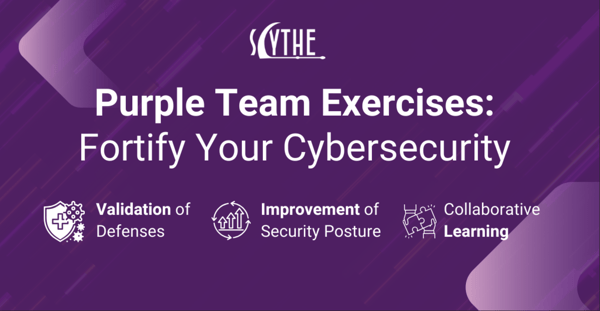Today, teams must find new ways to drive awareness and ensure a strong security posture while meeting annual compliance regulations to protect their data and systems. Compliance with standards such as ISO 27001, PCI DSS, and SOC Type 2 is crucial for businesses to demonstrate their commitment to security. Traditionally, penetration testing has been a required method to assess an organization's security posture. However, the limitations of penetration testing are becoming increasingly apparent, especially when compared to the more collaborative and comprehensive approach of Purple Team exercises. This blog explores the benefits of using Purple Team exercises instead of traditional penetration testing to meet compliance requirements.
Penetration testing, or pentesting, is a simulated cyber attack against your computer system to check for exploitable vulnerabilities. In the context of compliance, pentesting is used to identify security control effectiveness that must be addressed to meet specific frameworks. While pentesting can provide valuable insights into an organization's vulnerabilities, it has several limitations:
*Limited Scope: Pentests focus on specific systems, applications, and configurations but overlook broader security issues and security controls that are in place.
*Snapshot in Time: Pentesting provides a one-time assessment that fails to account for the dynamic nature of cyber threats.
*Lack of Collaboration: Traditional pentesting is typically conducted by external testers with limited interaction with the internal security team, leading to a lack of knowledge transfer.
*Ignores Layered Security Controls: Vulnerabilities and other issues identified are rated based on their severity in a vacuum and fail to account for a defense in an in-depth security posture.
The Rise of Purple Team Exercises:

Purple Team exercises introduce a collaborative approach to cybersecurity testing, where the offensive Red Team and defensive Blue Team work together to enhance security. Unlike traditional pen testing, Purple Team exercises:
*Foster Collaboration: By working together, both teams can share insights, techniques, and strategies, leading to a deeper understanding of the organization's security posture.
*Provide Broader Insights: Instead of focusing on configurations, apps, and systems, Purple Team exercises go beyond providing insights on policy and process-related issues that can drastically boost security efficacy.
*Provide Continuous Improvement: Purple Team exercises can be conducted regularly instead of a one-off test, allowing for ongoing assessment and improvement of security efforts.
*Focus on Real-World Scenarios: Purple Team exercises often incorporate real-world attack scenarios, providing a more accurate assessment of how an organization would fare against actual threats.
Purple Team exercises offer many advantages for organizations striving to meet compliance standards, as they deliver a more thorough and collaborative approach to cybersecurity than traditional penetration testing. Some benefits include:
*Comprehensive Coverage: Purple Team exercises provide a holistic view of an organization's security, covering more ground than traditional pentesting.
*Alignment with Compliance Requirements: By emulating real-world attack scenarios, Purple Team exercises can help ensure that security measures meet the requirements of specific standards like ISO 27001, PCI DSS, and SOC Type 2.
*Proactive Security: The collaborative nature of Purple Team exercises allows organizations to proactively identify and address vulnerabilities, reducing the risk of a data breach and ensuring compliance.
While penetration testing is a valuable tool in the cybersecurity arsenal, it has its limitations in compliance, particularly in providing actionable recommendations and contextual depth. Some limitations in the compliance context include:
*Prescriptive Recommendations: Pentesting often results in a list of recommended actions that may not drive improvements, especially with the organization's security needs or compliance requirements.
*Lack of Context: Without the collaborative context of a Purple Team exercise, pentesting findings may lack the depth needed to understand prioritization, as most pentesting is done by external 3rd-parties. Additionally, pentesting does not identify process and policy issues or fully understand and address security control issues.
Combining Purple Team Exercises with Tabletop Exercises:
Organizations can combine Purple Team exercises with tabletop exercises for a more realistic approach to conducting the tabletop exercise. Tabletop exercises are discussion-based sessions where team members walk through various security scenarios. The PTE generates richer, more dynamic, information that adds more realism to the standard turn-based TTX. This combination allows organizations to:
*Test Incident Response Plans: Ensure the organization's incident response plan is effective and aligns with compliance requirements.
*Enhance Communication: Improve communication and coordination between different teams, which is crucial for security and compliance.
*Identify Gaps in Security Posture: By discussing hypothetical scenarios, organizations can identify potential gaps in their security measures and make necessary adjustments to meet compliance standards.
In conclusion, while penetration testing has been a staple in cybersecurity assessments, the limitations of this approach are becoming increasingly evident. Purple Team exercises, especially when combined with tabletop exercises, offer a more collaborative, comprehensive, and proactive approach to security testing. For organizations seeking to meet compliance requirements for ISO 27001, PCI DSS, and SOC Type 2, adopting Purple Team exercises can provide a more effective and holistic assessment of their security posture, ensuring they are better prepared to protect their data and systems against evolving cyber threats.
